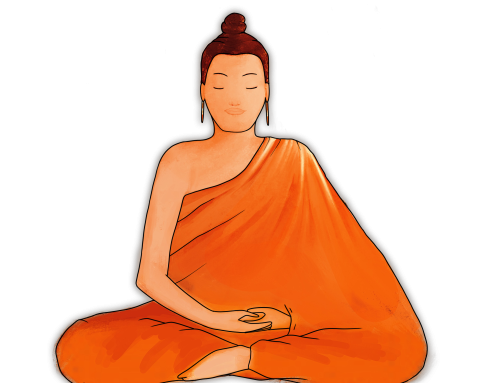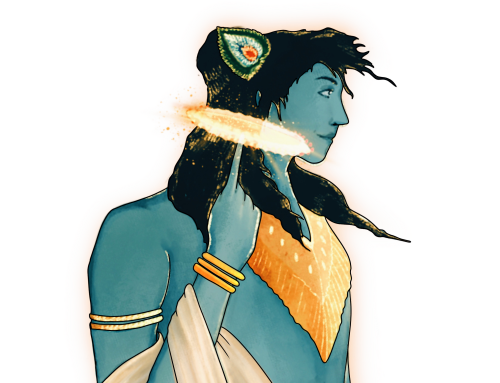Am so humbled to be writing about one of the greatest Gods, the God of the Gods, Mahadeva, who is God Shiva. Aum Namah Shivaya!
The word Shiva, meaning the auspicious one, is the God of ‘Destruction’ within the Trimurti. He owns ‘Kaala’ or the ‘Time’, and the responsibility to end the material Universe enabling the creation of a new one. There are infinite brilliant and mind-blowing concepts of God Shiva. He has set goals for us to achieve and is also showing us how to achieve them by doing them himself! Isn’t that brilliant?
Shiva and his symbolisms:
- Shiva and Rudra – Shiva is generally represented in 2 primary avatars. One as a calm Shiva and the other as a fierce Rudra. These 2 forms are symbolic of the tamed and untamed energy of nature.
- As Shiva, his energy is tamed. He is calm and in deep meditation as Adi-Yogi. He is one with nature or cosmos in the highest mental state that can be achieved by living beings. He is barely dressed and wearing animal skin telling us that all materialistic things including one’s own body are temporary. The only thing that is permanent is moksha or liberation and that should be everyone’s goal to be achieved. His matted hair or Jata tied by the chain of Rudraksha beads is again a symbol of tamed energy. His meditative pose with a half-closed 3rd eye, controlled flow of Ganga through his matted hair, wearing the moon or Soma as his crown to represent his blissful state of mind, one hand resting on the Brahma danda or the stick of Brahma and the other hand counting the beads of Rudraksha symbolizing to take control of Time or ‘Kaala’ are all symbolic of how one can achieve the highest standards of emotional balance, harmony, and peace within and with other living beings. The one who has all these characteristics is called Ishvara. Shiva and Ishvara are used synonymously.
- As Rudra his energy is untamed. He is strong, powerful, fearless, and fierce. His untied matted hair or Jata, 3rd eye wide open emitting fire, his body smeared with ash or Vibhuti, Rudraksha mala hanging on his blue neck, his Raudravatara or Rudra avatara is all about destroying the evil. He wields the most powerful weapon Trishula, plays the Damaru or the Drum whose vibration and sound shakes the Universe and he dances in vigorous brisk movements of his dance form Rudra Tandava as the bringer of death, to end the time of the material universe in order to re-create new life and new universe to restore the cosmic order.
- Trishula or Trident – It is regarded as one of the most powerful cosmic weapons or an Astra in ancient Indian stories and scriptures. It is wielded by Shiva to destroy evil. The 3 pins of Trishula symbolize multiple aspects like the cycle of Universe – Creation, Maintenance, and Destruction or Trimurti themselves, or 3 Gunas – Sattva, Rajas, Tamas, or it represents the wisdom beyond 2 eyes along with the 3rd eye and so on.
- Damaru or Drum – The sound of the Damaru represents the Cosmic sound Aum or Om. This is the sound to which Shiva dances as Nataraja or the Lord of Dance in his dance form called ‘Tandava‘.
- Tryambaka or Trinetra or the Lord with 3 Eyes – As the calm Shiva, the half-closed 3rd eye is to look inwards, in a meditative state that represents peace from within and oneness with the self and nature. It represents wisdom to look beyond what can be perceived with naked eyes. Philosophically, it is the search to meet one’s Atman or the soul and to be one with it. As the fierce Rudra, 3rd eye is to destroy evil. The opened 3rd eye once aimed at someone or something can emit fire or Agni and burn it into ashes.
- Ganga – River Ganga descends from heaven into the coils of Shiva’s matted hair to be tamed (since her turbulent force would shatter the Earth) before she arrives in the Himalayas. This is again symbolic of energy management, the importance of which is being told to us repeatedly in different ways.
- Nataraja and Tandava – Shiva as Nataraja or the Lord of dance is a patron of dance. He performs his dance form called ‘Tandava’. When performed in a joyous state, the dance is called Ananda Tandava and when performed in a fierce state, it’s called Rudra Tandava.
- Soma or Moon – God Shiva wears Soma or Moon on his head to highlight the blissful state he is in.
- Nagaraja/Vasuki – God Shiva wearing a snake – King Cobra or the King of Nagas whose name is Vasuki as an ornament is symbolic of multiple things. Philosophically it represents the cycle of birth and death which is connected to snakes shedding their skins and getting new skin. A snake with a raised hood according to Yoga also symbolizes the awakening of the untapped energy called Kundalini. Shiva is highlighting us to realize this potential energy.
- Rudraksha – Rudraksha has its origin as the tears of Rudra. It is believed to have been created from the eye of Rudra when he closed his eye of destruction (3rd eye). Hence it’s believed to have the energy and calmness of the most powerful inner eye.
- Shiva and his vahana Nandi – Nandi or the Bull is the vahana or mount of Shiva. This is another example of energy being tamed. Nandi or the Bull is very powerful and aggressive only when required and otherwise, it’s mostly seen in a state of devotion to God Shiva.
- Vibhuti & Tripundra – Vibhuti or ashes smeared across the forehead to the end of both eyebrows is called tripundra. Devotees of Shiva wear it.
- Shiva as Adi-Yogi: Shiva is a patron of yoga and meditation. He is Adi Yogi meaning the first yogi and the first teacher of yoga. The symbols Rudraksha as Japa mala or prayer beads and Kamandalu/water pot are hence associated with Yogis or Rishis and meditation. He rests His hand on a wooden stick called Brahmadanda or the Stick of Brahma. It is said that the powers of the Yogi/Rishi or Sage can be transferred to his Brahmadanda.
Our takeaway from Shiva symbolism is about the importance of understanding yourself and managing emotions by looking within you.



